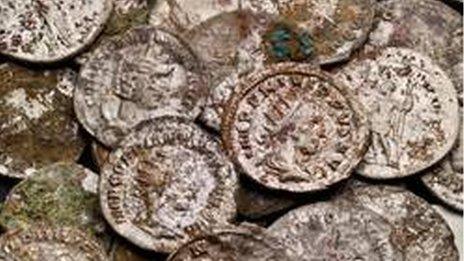Dig begins in Lufton to locate Roman villa
- Published

The Roman villa is one of four known villas in the country
Archaeologists have begun a dig set up to uncover further remains of a Roman villa and an octagonal bathhouse.
The month-long dig is taking place on farmland at Lufton near Yeovil, Somerset, which has not been fully investigated since the 1960s.
Project leader Dr James Gerrard, said the villa included "a very unusual and elaborate octagonal structure which we usually think of as a bathhouse."
This is the final stage of the project, which started in 2009.
'Techniques and equipment'
"We're looking for a late Roman building and we're looking to identify precisely where it is and assess the state of preservation of that structure," said Dr Gerrard.
The team took 12 months to obtain permission from Historic England to excavate the site.
It was first excavated in 1946 to 1952 and again 1960 to 1963 by local archaeologist, Leonard Haywood.
"Back in the 50s and 60s, they didn't have the techniques and equipment we have today so we're here to answer some of the questions that Leonard Haywood couldn't answer," added Dr Gerrard.
"We're looking for data about the environment and the economy, like animal bones and Roman coins."
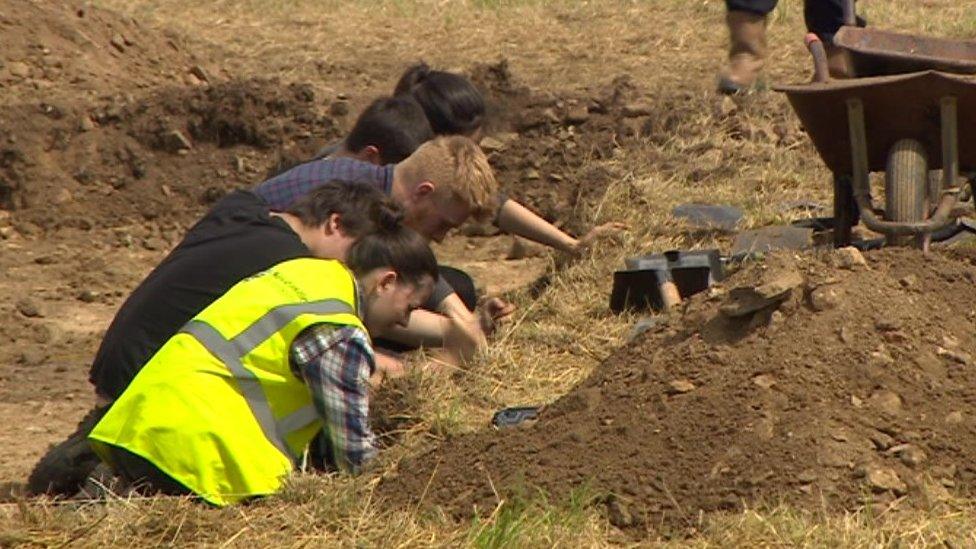
The dig will take a month and will uncover more details about what the Roman villa was used for
The villa is one of four Roman villas in the country with similar structures so is considered rare and unusual.
"At the end of the villa's life, the building changes so its function changes and people start doing very different things in it," Dr Gerrard said.
"So, in the 4th Century they were walking about on nice mosaic pavements.
"Towards the end of the 4th Century they were making or repairing iron objects, they're inserting ovens through the mosaic pavements and it looks very different.
"What does that tell us about how the Roman Empire fell apart?"
Once the work is complete, the team will use a 3-D scanner to recreate a model of the villa on a computer to examine the building more closely.
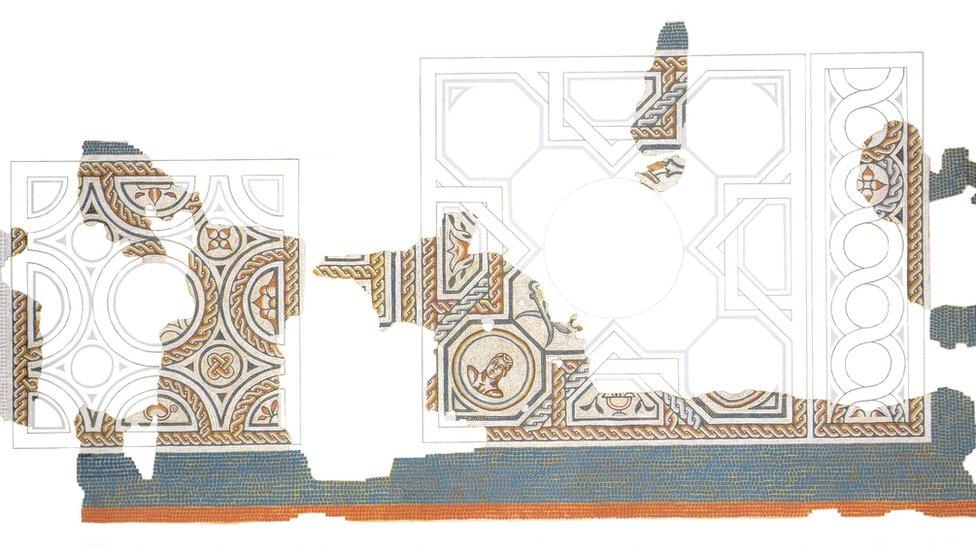
Floor mosaics were previously revealed during the digs in the 1950s and 60s
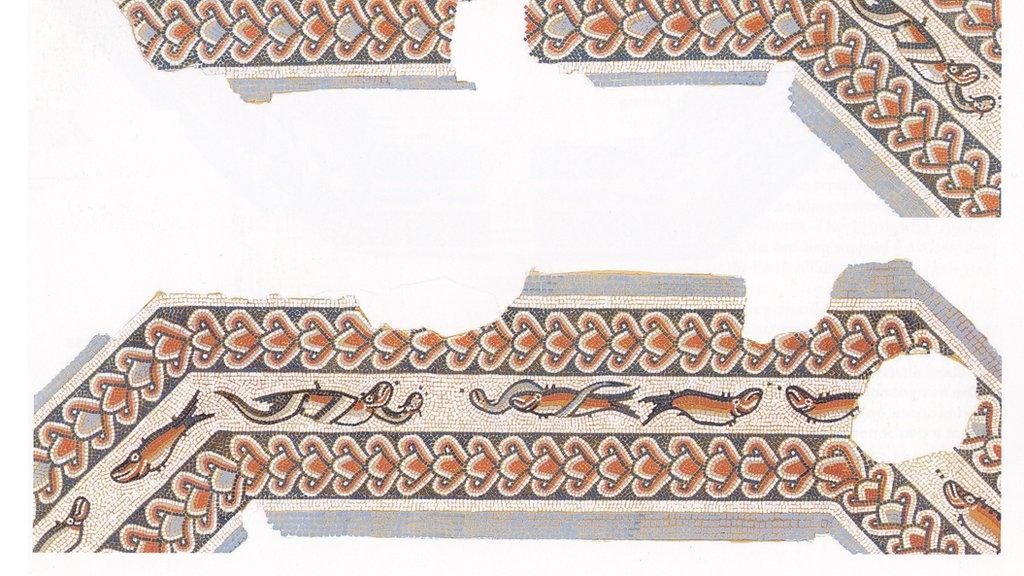
The mosaics decorated the edge of the bath inside the octagonal bathhouse
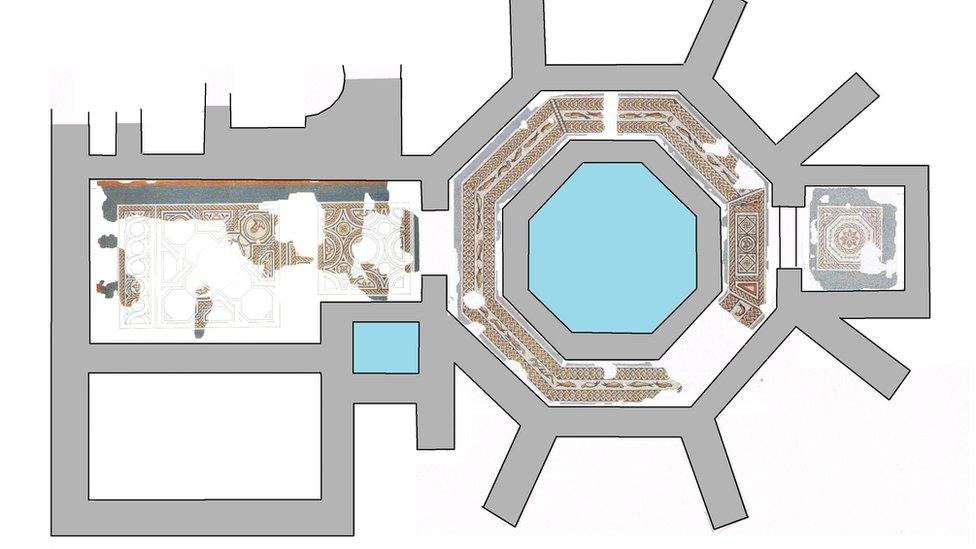
The floor plan of the Roman villa shows the mosaics and the unusual bathhouse design
- Published25 March 2015
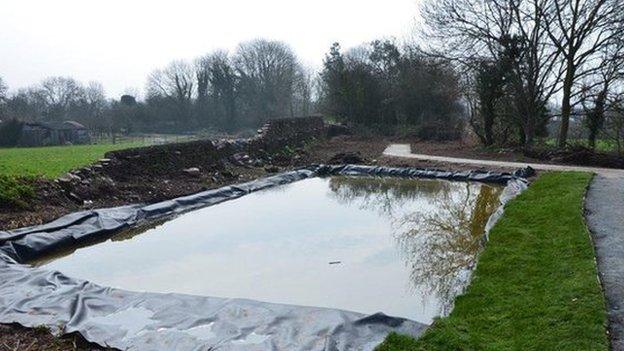
- Published2 September 2013
.jpg)
- Published22 March 2012
